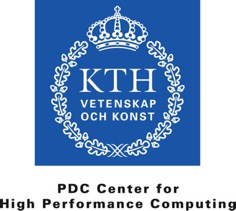Speaker
Prof.
Pär Strand
Description
Thermonuclear fusion energy is one of the most attractive
future energy sources because of the widespread and
abundant distribution and low cost of its fuel supplies, and
because of its inherent safety and environmental features.
A positive energy balance in a magnetic fusion device
requires heating a Deuterium and Tritium mixture to
around 100 million degrees and maintaining the hot plasma
in magnetic confinement for sufficiently long time.
Understanding and controlling the processes and instabilities
inherent in a fusion energy grade plasma is therefore key to
achieving a sustained nuclear fusion.
Understanding the interaction between the macroscopic
instabilities and the microscopic plasma perturbations is
always a challenging issue due to the intrinsic multi-scale
and nonlinear nature of the problem. It is, on the other
hand, an almost unavoidable step towards realistic
simulations of high temperature fusion plasmas.
Microscopic instabilities have gained much attention over
the last few decades mainly because they tend to define
size of a viable fusion reactor. Hence a lot can be gained
from a detailed understanding of the underlying physics -
unfortunately this is a very hard problem and has only
recently become tractable due to the rapid development of
computing systems and more importantly theoretical
developments.
In this presentation:
a) A brief general introduction to fusion
b) A discussion on the theoretical model(s9 and technical
implementations
c) Overview of results from the Chalmers gropu using the
GENE code

